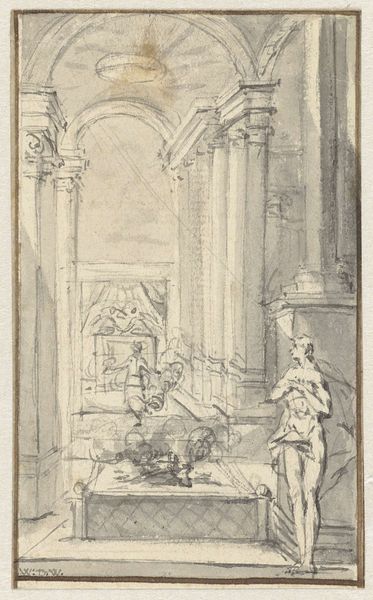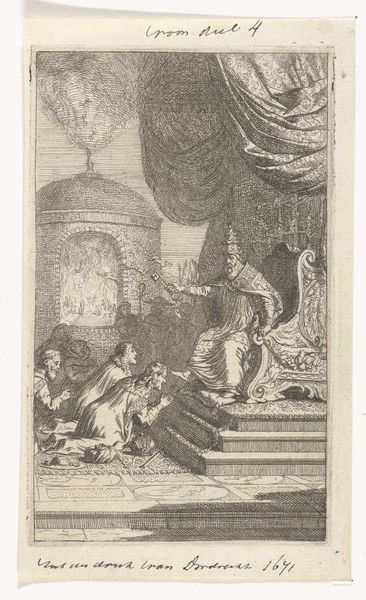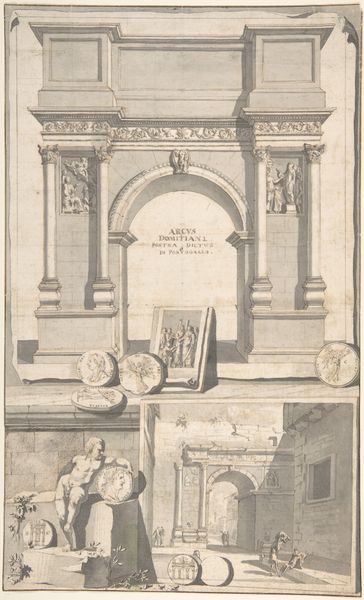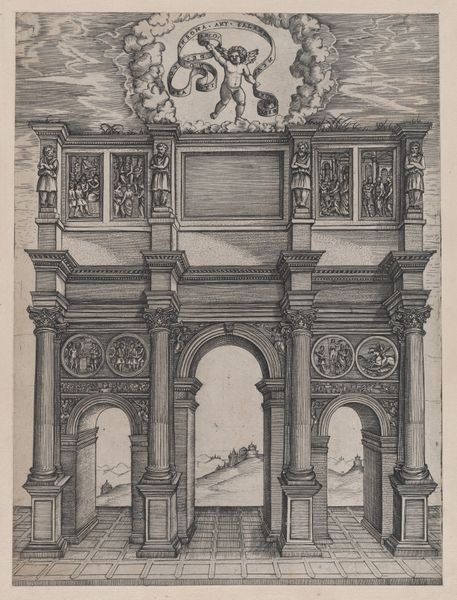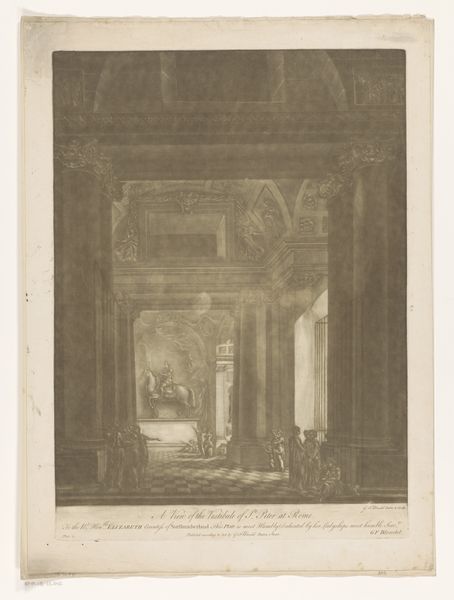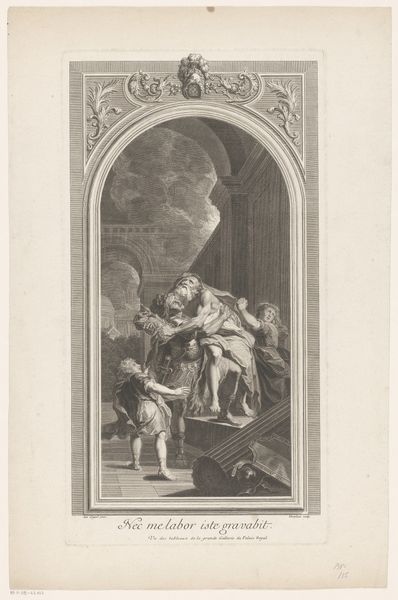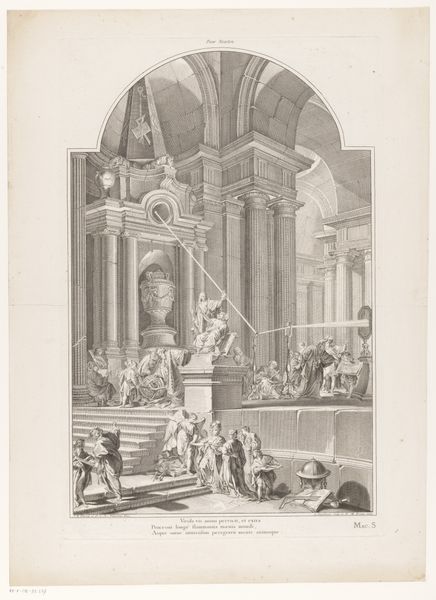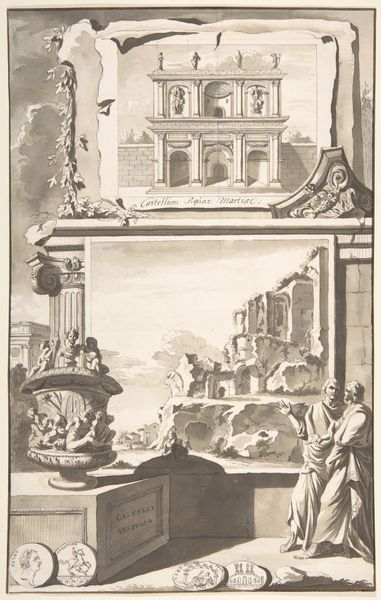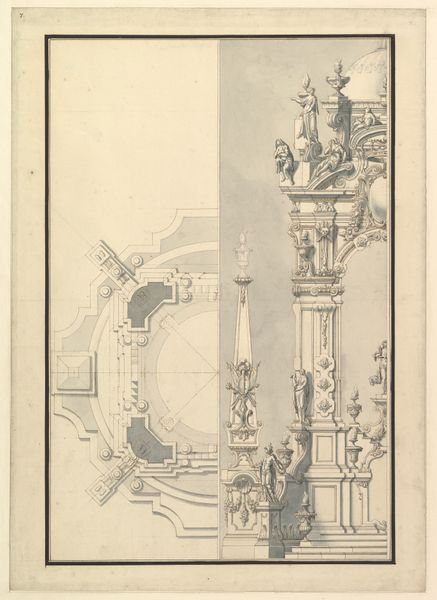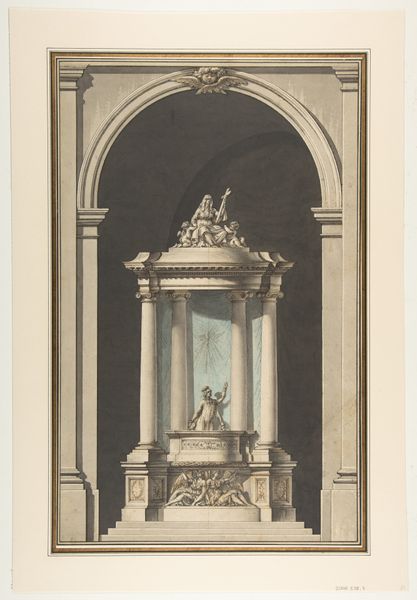
A Shepherd under a Ruined Arch with the Farnese Hercules 1726 - 1750
0:00
0:00
Dimensions: 14 1/4 x 9 3/8 in. (36.2 x 23.8 cm)
Copyright: Public Domain
Johannes Antiquus made this drawing with pen and gray ink and gray wash on paper sometime in the first half of the 18th century. It depicts a shepherd resting among classical ruins, with a statue of Hercules looming in the background. Drawings like this were very popular in Europe at this time. As the great European powers expanded, the ruins of antiquity became a source of fascination and a symbol of the past glories to which they were the heirs. For centuries the papacy had displayed classical sculptures in the Vatican, effectively claiming dominion over the legacy of Rome. Antiquus’s drawing speaks to that cultural phenomenon. By placing the shepherd in the foreground, it brings this imperial project down to earth. The shepherd has an everyday quality. He is part of the landscape, but he also inhabits a world shaped by history, power, and the echoes of empire. To understand art like this more fully, historians might research collections of antiquities, travelogues, and the institutional history of museums and collections. The meaning of art is contingent on its historical and institutional context.
Comments
No comments
Be the first to comment and join the conversation on the ultimate creative platform.

